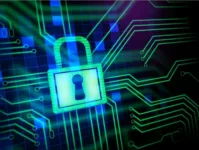When you and your employees are browsing the web and using apps that make your lives easier, you want to feel secure.
Therefore, you’ve probably invested in a variety of tools that promise to guard your corporate and private devices.
For individuals, the stakes are not as high as they are in corporate security, but you still want to protect your data with basic software.
With so many cybersecurity tools that are popping up left and right, it can feel overwhelming and confusing to choose the right one. If you’re not a cybersecurity expert, it’s really challenging to know if the software that you have truly does its job.
In such instances, cybersecurity leaves us with more questions than answers — making us question whether we’re protected at all.
Which tools do you really need to protect your devices from potential cyber-attacks?
While looking for answers, two of the most standard tools stand out as a must-have — the basic firewall and an antivirus.
But once you install a firewall, are your devices and your data truly safe? Do you need to pair it with anti-malware?
What is a firewall, how do you know whether you need it and that it does the job it promises. Also, how does it compare with the other software that protects you?
What is a Firewall Exactly?
A firewall is a basic software that defends your devices from a possible cyberattack.
Essentially, it monitors the incoming traffic to discover whether it contains malicious code that could harm your computer.
It filters the data that is trying to enter your system and decides whether it could pose a threat to your device. A firewall is set for scanning the new threats that have already been recognized as a security issue.
If it discovers known malware during the scanning of your network, it will mitigate the virus — removing it even before it enters your system.
Depending on the firewall you get, it might also have features that are similar to other cybersecurity tools — such as antivirus or VPN. For companies that use the next-generation firewalls, it can also enforce security policies for social media such as Facebook.
How Can You Know if Your Firewall is Working?
Some ways you can test whether your firewall does its job include:
- Opening the control panel and checking if the firewall is operating on your device
- Testing the security devices that you have with automated tools or pen testing
Do You Need Both a Firewall and Antivirus Software?
This all depends on the firewall provider. Not all firewalls are the same, and some come with a built-in antivirus.
Most people download both a firewall and an antivirus because firewalls are specialized for monitoring incoming traffic and defending the network from the get-go. However, it might fall short in case malware finds its way inside your devices from external drives.
This means that if the virus enters your devices via a USB, the firewall that is monitoring the traffic coming from the internet can’t really detect and remove the malware from other sources.
An antivirus scans for possible threats that have already found their way to your devices, while your firewall is more focused on blocking the virus before it even gets a chance to enter the system and do damage to your computer.
Some consequences of an undiscovered virus could be that cybercriminals have access to your sensitive data or that it can spy on you for months without you realizing it.
Can You Have Too Many Firewalls?
Enterprises have security teams that set up layered security that can consist of more than one firewall. They have more users and a variety of different systems that must be protected against possible malicious traffic.
However, for individual users that don’t have a cybersecurity background or complex systems to protect, it’s not recommended to run more than one firewall at the same time.
Running multiple firewalls can cause mistakes and end up with both of your firewalls not working properly. If you have more than one firewall, run them separately.
But what if you already have a firewall on your computer, as Windows users normally do?
Windows users already have a firewall that is built in to protect them from malicious traffic. If you already have purchased an additional firewall and downloaded it to your computer, you might want to consider turning off the firewall that is provided by Windows when you run it.
However, in general, it is not recommended to turn off the firewall provided by Windows because that might make your network vulnerable and open to possible hacks. Cybercriminals could exploit this flaw in your system and use it to get into your devices.
Do you Need Both a VPN and a Firewall?
Firewalls, in most cases, include a Virtual Private Network (VPN). To protect devices and conceal online activity, it reroutes your IP address, hiding your true location from the rest of the internet.
For companies that have remote workers, the combination of a firewall that removes malware and creates a secure private network is essential.
Having a VPN that creates a safe tunnel while surfing the web makes the firewall a great way to secure data and conceal web activity.
Information in the tunnel that is created to hide your activity from the public internet is encrypted and protected.
Conclusion
A firewall is a versatile and basic tool that protects both individuals and large organizations.
It filters traffic when you’re online and ensures that malicious code is removed before it gets the chance to enter your system.
Depending on the version of the firewall you use, it can also have additional features that guard your data against prying eyes or even enforce security policies for social media.
To ensure that you get the most out of your firewall, check if it’s running in the background and ensure it doesn’t conflict with the firewall provided by Windows.
Written by Adam Eaton








